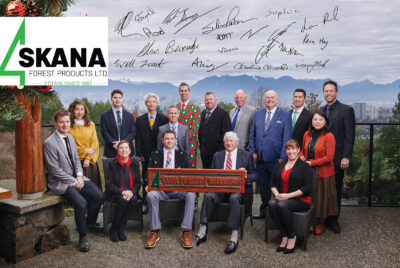Only hours after his swearing in, President Biden signed an Executive Order to rejoin the Paris Agreement and sent a clear signal that he intends to make climate change a significant priority. More recently, through other Executive Orders, the President has provided further details on the initial actions that his Administration plans to take to begin work toward achieving the stated goal of a “net-zero economy by 2050.”
What is clear in these Orders is that this Administration will use its purchasing power as a central policy tool to drive carbon reductions, and in fact several states are exploring similar measures through “Buy Clean” legislation. As the Federal Government and states look to replace ageing infrastructure, drive job creation, and change the way government buildings are designed and constructed, all while reducing carbon emissions, wood products are uniquely positioned to meet these challenging goals.
The Consortium for Research of Renewable Industrial Materials (CORRIM) recently developed a letter that makes it emphatically clear that wood products can and should be a part of the climate solution. The letter, signed by 38 scientists from across the country, supports wood products as carbon negative and illuminates how wood products can play an important role in climate and carbon mitigation strategies. Backed by well-respected scientists and academics, the letter serves as a compelling tool in educating a wide range of stakeholders on the sustainability benefits of building with wood.
The reasons to build with wood are thoroughly backed by science. For its part, CORRIM member institutions and their partners have collectively generated hundreds of peer-reviewed publications and spoken both nationally and internationally on the benefits of using wood as a carbon-negative technology. Together in partnership with the U.S. Forest Service (USFS) Forest Products Lab, the USFS Pacific Northwest Research Station, the U.S. Department of Energy and other federal labs they have created a large body of work using data-driven life cycle analysis to quantify and characterize the environmental performance of wood products.
But that’s not all. As stated in the letter, the industry uses 99 percent of each log, resulting in almost zero waste and ensuring maximum use of this precious resource. Over 70 percent of manufacturing emissions from the sector are from carbon neutral biomass energy, again reducing the industry’s footprint and reflecting a circular economy approach. The letter impressively notes that:
Taken together, US forests and wood products remove enough carbon dioxide from the air on a yearly basis to offset about 10-15 percent of US fossil fuel combustion emissions. Of that total, an average of 13 percent is in harvested wood products.
The letter also addresses concerns that an increase in wood demand might negatively impact the amount of forest in the country. Quoting a USFS study, the letter provides that “despite generating 11 percent of global wood products from USA working forests, we have 25 percent more standing live tree biomass now than in 1990, and 30 percent more than in 1953.” Notably, the largest gains have been on private lands, reflecting the power and potential for working forests as both economic driver and climate solution.
These are just a few of the many scientific justifications CORRIM lays out in its letter to Congress. As federal and state lawmakers continue calling for an examination of climate impacts of the built environment, AWC is taking a proactive approach and leading conversations with federal and state governments and other stakeholders on how the wood products industry provides a solution to the challenges of reducing carbon emissions while supporting rural economies and ensuring healthy, productive forest lands. Our industry has an incredible story to tell, and now is the time to tell it. AWC is well positioned to do so.






